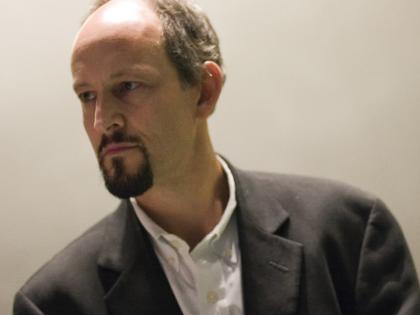The main baptistery doors of the Duomo in Florence, created by Lorenzo Ghiberti between 1425 and 1452, are among the masterpieces that ushered in the Renaissance. Michelangelo himself declared them “worthy to be the gates of Paradise.” Each bronze door stands 16 feet high, weighs two tons, and bears inset, gilded-bronze relief sculptures, including five three-foot square panels that depict scenes from the Old Testament.
A decade after a 1966 flood in Florence burst open the doors, corrosion began to threaten the integrity of the gilding. Italian conservators dismantled the doors to clean and conserve them (eventually replacing them with replicas). This decades-long project is nearing completion. To prevent future corrosion once the doors are reassembled, they will be placed in a sealed case filled with inert gas and displayed in the Duomo Museum. Before this happens, however, three of the panels will travel to the United States for the first time, to the High Museum of Art in Atlanta (April 28-July 15), the Art Institute of Chicago (July 28-October 13), and the Metropolitan Museum of Art in New York (October 30-January 14, 2008).
 |
| Photograph by Stu Rosner |
| Research curator Francesca Bewer is modeling wax replicas of Ghibertis bronze panels to help explicate how they were made. |
Francesca Bewer (pronounced BAY-ver) of Harvard’s Straus Center for Conservation (where she holds one of two research positions dedicated to technical art history—rare in any art museum), studied the panels in 2005 with colleagues from the Metropolitan and the National Gallery of Art to figure out how they were made. A February 2006 interdisciplinary gathering of art historians, conservators, and scientists convened by the Andrew W. Mellon Foundation’s Museums and Art Conservation Programs officer, Angelica Zander Rudenstine [wife of former Harvard president Neil L. Rudenstine], “provided an opportunity to undertake new research and documentation, and to assess what we know about the doors before they are reassembled and sealed behind plexiglass,” says Bewer.
“Our Italian colleagues were extremely generous in allowing us such close access to the pieces,” she continues, “even though our views diverged about how Ghiberti made the reliefs. Fingerprints and other evidence that prove Ghiberti had access to the backs of the panels suggested to the Italian team in charge of technical research that he used an “indirect” casting method. Although such marks are considered characteristic of indirect casts, Bewer and her two colleagues believe that Ghiberti used a “direct” method.
Everyone agrees that Ghiberti used the “lost wax” technique to create his bronzes. Known since the third millennium B.C., this casting procedure involves creating a wax model and then covering it with a fire-resistant clay mold. The entire assembly—wax embedded in clay—is heated to dry the mold and drive out the wax. Molten metal is poured into the hollow left behind. Once the metal has cooled and hardened, the mold is broken away to free the bronze inside. Because both model and mold are destroyed in this “direct” casting approach, the work would be lost should something go terribly wrong. The “indirect” method, which enables replicas to be made—and thus provides a backup—adds a step at the beginning of the process: the creation of a reusable mold. In Ghiberti’s day, before flexible molding materials were used, this would have been a plaster piece-mold. Such a mold is designed like a three dimensional jigsaw puzzle, Bewer explains. Each interlocking piece can be removed without damaging the model, and reassembled any number of times to produce replicas for casting by pressing, pouring, or painting wax into the hollow mold.
 |  |
| Artstor | |
Photographs of the panel depicting the story of Jacob and Esau show how Ghiberti combined linear perspective with three-dimensional modeling to create a convincing feeling of depth. | |
Bewer and her colleagues point to a range of evidence, both contextual and technical, to support their direct-casting thesis. “Imagine molding so many protruding figures and intricate undercuts!” she says. “There is no indication that anybody knew how to make such a complex piece-mold back then.” Nor are there any multiple casts of bronze sculptures from Florence at that time; indirect casting technology would easily have allowed such replication. Ghiberti, Bewer suggests, adopted a direct process that allowed him to access the backs of the panels for one important practical reason: to affix the network of wax channels or “sprues” that ensures the circulation of the liquid metal and escaping air through the mold. The channels fill with bronze during the pour and are later cut off the cast sculpture. Many traces of these channels scar the back of the panels. “Had Ghiberti attached sprues to the front,” she notes, “it would have jeopardized the delicately modeled detail and required a lot of extra and intricate labor to recreate.”
Even Ghiberti’s style suggests that he used the direct method, Bewer says. Later sculptors using the indirect method simplified their forms to make the piece-molding process easier. But Ghiberti’s forms “are too detailed and free-flowing to have been molded. Look at them,” she says. “Aren’t they amazing?” For her, the mystery is how Ghiberti created the illusion of depth in a shallow space, transforming figures from nearly flat relief at the feet into fully three-dimensional sculptures. “How did he figure out the perspective?” she wonders. The mystery of how they were cast, she says, is just an element of that larger mystery.
~Jonathan Shaw
Francesca Bewer e-mail address: francesca_bewer@harvard.edu







